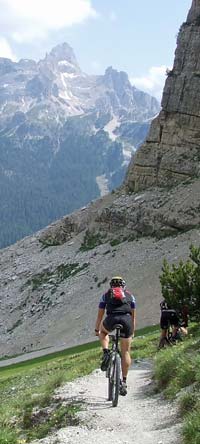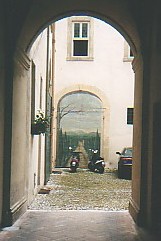Italy is a land of total, startling extremes. In geographical terms alone, it is one of Europe’s most disaster-prone countries. Italy’s Civil Protection service works in a constant state of readiness to cope with the country’s active volcanoes, earthquakes, floods, avalanches, forest fires…
A large proportion of the country is hilly, and modern Italy is shaped by its natural geography as well as by millennia of turbulent history. Over the last three thousand years, Italy has had a consistently rich culture, producing fine buildings, works of art, and a mythologised history with timeless appeal.
From the jewels of the Italian Riviera to the high slopes of the Abruzzo, the more time you spend in Italy, the more faces you will discover. Italy, and the Italians, are at times cultured and barbaric, modern and surreally old-fashioned, lazy and vibrant, in thrall of the past, and careless of it.

This is a country where cities have been at war with each other for centuries. Nowadays this masquerades as football rivalry or civic pride, but really it’s a continuation of the peninsula’s city-state culture. Italians traditionally feel they ‘belong’ primarily to their town (this may be their parents’ birthplace, where they have never lived), secondly perhaps to Europe. ‘Italy’ is a concept which is still being worked at, and Mameli’s national anthem a tool which is wielded not for custom but for political ends. If you want to please an Italian, firstly praise the beauty of their city. Secondly compare it favourably with other Italian cities.

Italy means something different to every tourist. Pizza, ruins, great works of art, hot beaches, handsome youths, good wine… The country is an obliging one, and few visitors leave disappointed. If you’re looking for one aspect of Italy, you’ll find it served on plate, even richer than you expected. And if you are open and receptive, the chances are you’ll find much more than you dreamed of.
A ‘typical’ Italian town
In a flat-ish area, the railway station is likely to be a 10-20 minute walk from the centre of town. In a hilly area the railway will usually run through a newer part of town, while the historic centre sits on a hill nearby. In this case the two places will be linked by bus (or even funicular, as in Bergamo).
Just about every Italian town has a centro storico historic centre which is often still medieval, Renaissance or Baroque, and maybe walled. Large-scale urban growth took place in the 19th and 20th centuries, tending to be unregulated and ugly. Tourist sights are usually all in the centro storico, along with the more atmospheric hotels. Here you’ll find the town cathedral Duomo and the town hall, along with a tower (clock tower, civic tower or campanile). These sights are usually grouped together in the town’s main square, (frequently Piazza del Popolo or Piazza del Duomo), where you’ll also find cafe tables and a few surrounding pedestrianised cobbled streets.
Read more
On this site